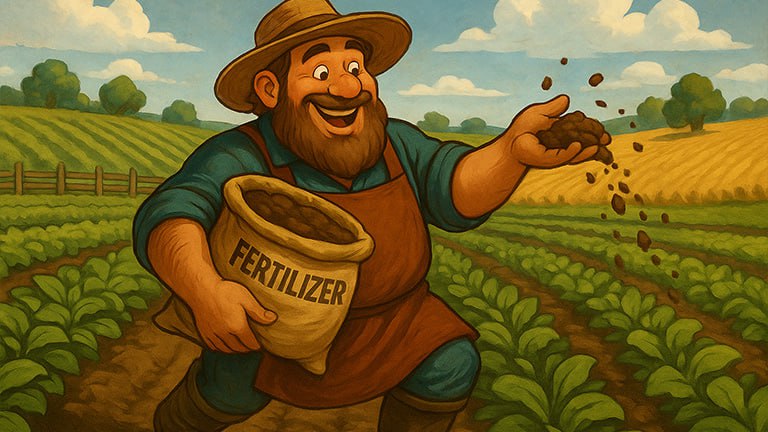yield Increasing#

The yield of one field per agricultural cycle can be increased by applying fertilizers, which allows for a greater harvest with the same costs (seeds, taxes).
Fertilization is possible in two ways:
- Manual application of specially prepared fertilizers.
- Peacocks grazing in the field.
The effects of the methods are cumulative when used together.
Types of fertilizers#
In the Manure and Fertilizers section, you can obtain fertilizer from manure. Fertilizer can also be bought or sold at the market. There are four types of manure and four types of fertilizer, the amount required depends on the type.
* Table. - The required amount of fertilizer for 100% treatment of 1 plot.
| Types of manure | Types of fertilizer | Fertilizers, units |
|---|---|---|
| Dragon | Dragon Breeze | 50 |
| Cow | Cow breeze | 100 |
| Pig | Pig Breeze | 75 |
| Chicken | Chicken Breeze | 10 |
Fertilizer application procedure#
The field can be fertilized if the following conditions are met:
- A clone has been assigned to work on the site.
- Sowing of seeds has not yet begun.
- The area was not fertilized in the current or previous season.
Each plot can be fertilized only once per season. The effect lasts only for the current season. Application time is proportional to the amount of fertilizer applied: 1% = 1.2 hours.
Table. Duration of fertilizer application
| Fertilizers, % | Duration, hours |
|---|---|
| 10 | 12 |
| 50 | 60 |
| 100 | 120 |
This stage can be accelerated by hiring servants.
Increasing yield#
The yield is proportional to the amount of fertilizer applied.
Table. Effect of fertilization rate on crop yield
| Culture | no fertilizers | 10% | 50% | 100% |
|---|---|---|---|---|
| Lucerne | 10 | 12 | 20 | 30 |
| Oats | 10 | 12 | 20 | 30 |
| Turnips | 10 | 12 | 20 | 30 |
| Fodder beet | 10 | 12 | 20 | 30 |
| Swede | 10 | 12 | 20 | 30 |
| Tomatoes | 10 | 12 | 20 | 30 |
| Potato | 10 | 12 | 20 | 30 |
| Cabbage | 12 | 14.4 | 24 | 36 |
| Eggplant | 8 | 9.6 | 16 | 24 |
| Onion | 8 | 9.6 | 16 | 24 |
| Flax | 10 | 12 | 20 | 30 |
| Amaranth | 12 | 14.4 | 24 | 36 |